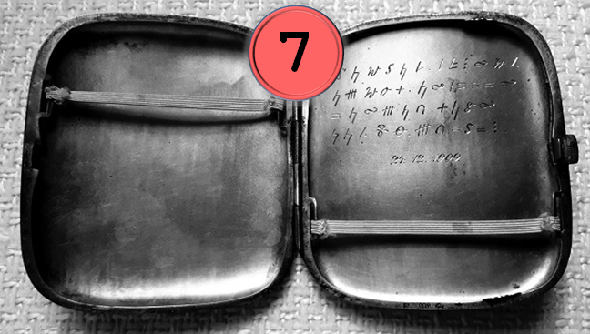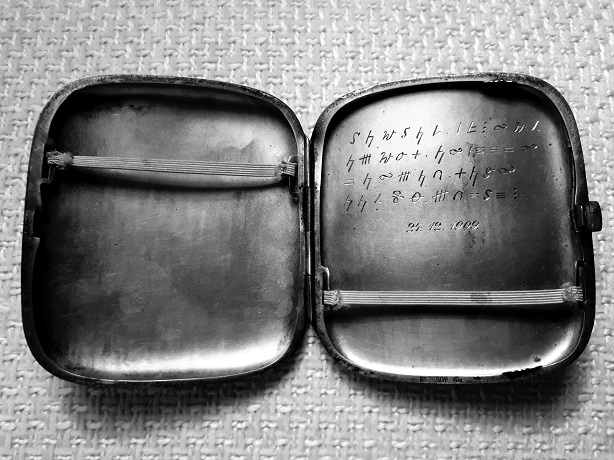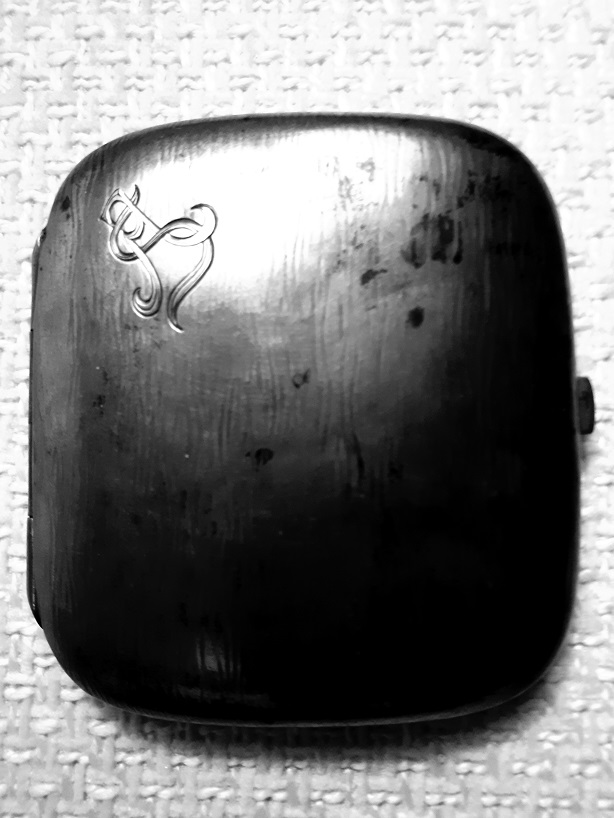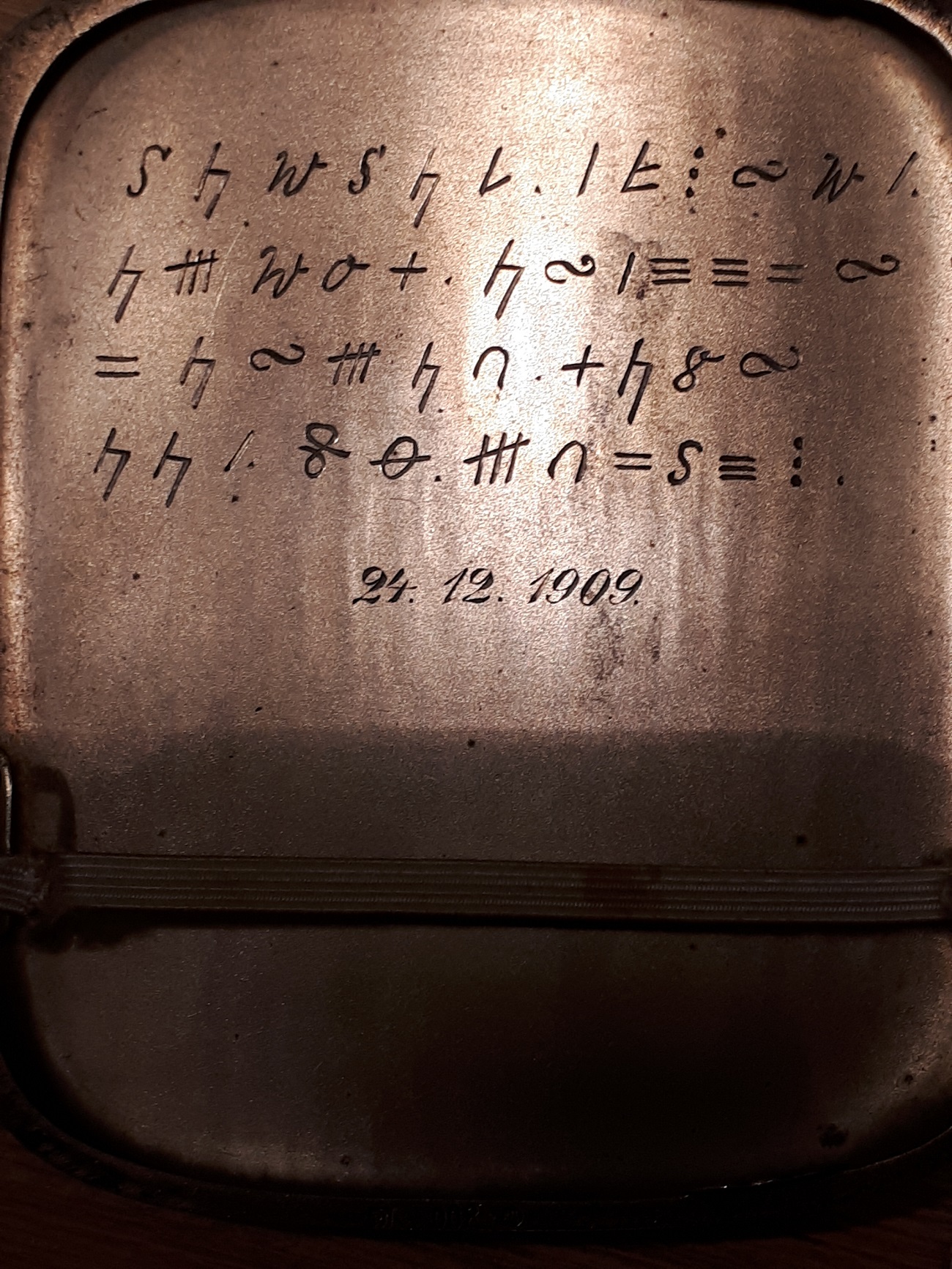Last year I reported on an encrypted inscription on a cigaret case from 1909. Though it looks like a simple substitution cryptogram that can be broken without much effort, it is still unsolved.
Click here for the complete top 50 list
When last year in November a reader sent me pictures of an encrypted dedication in a cigaret case, …
… I immediately blogged about it.
To me this cryptogram looked like an ordinary one-to-one encryption (also known as MASC), like it is encountered on numerous encrypted postcards, in Freemasonic documents, in encrypted diaries, and in crypto puzzles – just to name a few examples. Cryptograms of this kind can usually be solved with techniques like word guessing or frequency analysis. Some of my readers, including Armin Krauß, Norbert Biermann, Tony Gaffney and Thomas Bosbach, are extremely skilled in breaking encryptions like these. At the HistoCrypt in Sweden, Armin solved a similar-looking ciphertext within minutes.
However, no reader has ever come up with a solution of the cigaret case cryptogram.
Some background information
Here’s the exterior of the case:
The cryptogram consists of four encrypted lines. Here’s a closer shot:
The cryptogram is dated December 24, 1909. Presumably, it was a Christmas present. The way the date is written (dd.mm.yyyy) is typical German. The owner, who inherited this case from his father (it has been in family possession for generations), provided me the following information:
- There is no reliable information about the origin of the case.
- The family mainly stems from Thuringia (Thüringen), now a part of Eastern Germany.
- The family has always spoken German.
- The symbol on the frontside of the case depicts the letters AS. These are probably the initials of the first owner.
- A stamp indicates that the case was made of 800 silver. The stamp represents a “Reichssilberstempel” with a crescent and a crown, as used in Germany at that time.
Codebreaking approaches
Here’s a transcription of the cryptogram the current owner provided me:
1: s h w s h l . / t | ~ w /.
2: h 4 w o + . h ~ / 3 3 = ~
3: = h ~ 4 h n . + h 8 ~
4: h h /. % 0 . 4 n = s 3 | .
The dots probably are word separators. Lines 1 and 4 end with a dot. This probably means that the last words in lines 2 and 3 continue after the line end. If so, the third last word is not “hh/” but “+h8~hh/”, which is more plausible.
After my first article about this cryptogram, I received 40 comments. Bart Wenmeckers was certainly right when he wrote: “Dedications like this can be tricky as they are often short in length and often contain names (nouns) which can mess up machine solvers.”
In addition, Bart asked: “In German are there also local dialects?” The answer is yes. There are many German dialects, some of which differ considerably from the standard language. These differences were even bigger a century ago, when encounters between persons from different regions were less common and there was no TV or radio. Thuringia, where the owner of this cigaret case comes from, has a dialect of its own: https://en.wikipedia.org/wiki/Thuringian_dialect
Blog reader Charlotte von Auer pointed out that a cigaret case of this kind was a luxury item only a wealthy (and therefore probably educated) person could afford. It should therefore be taken into account that these four lines represent a poem or a literature quote. If the language is not German, Latin and Greek are interesting candidates.






Kommentare (3)